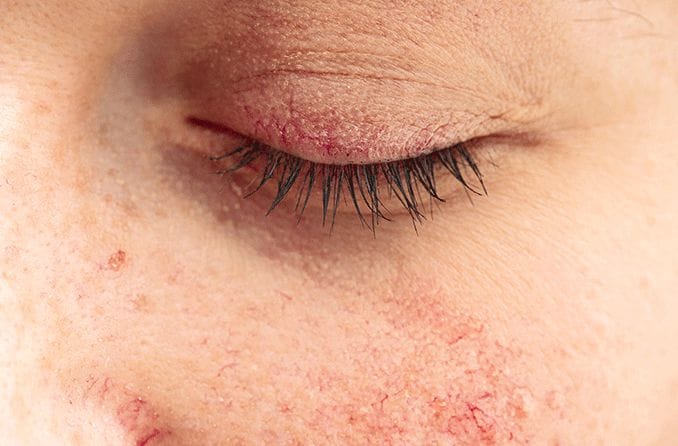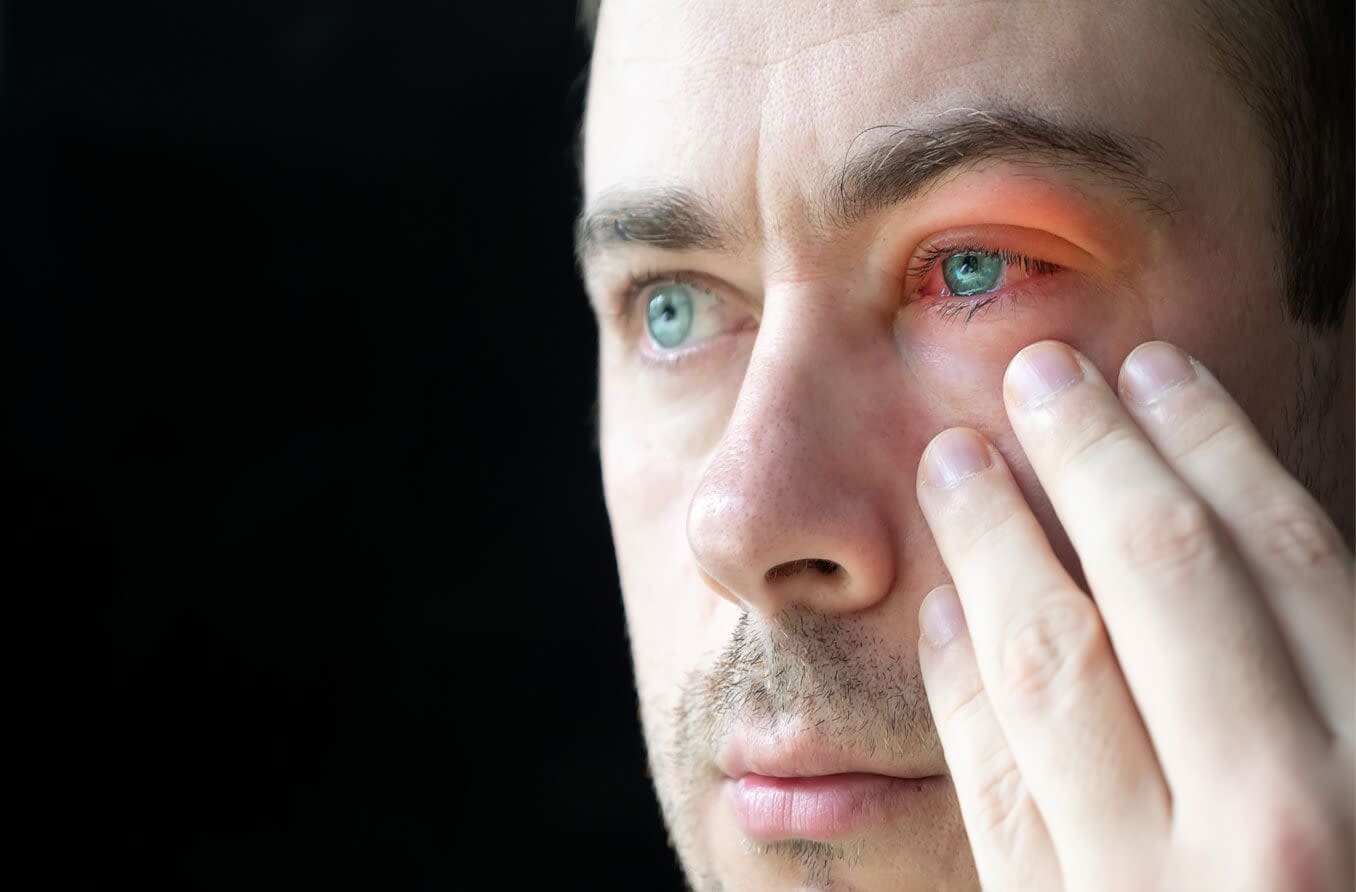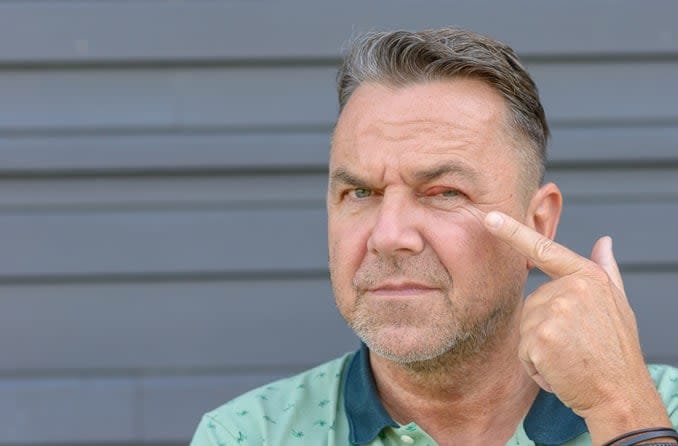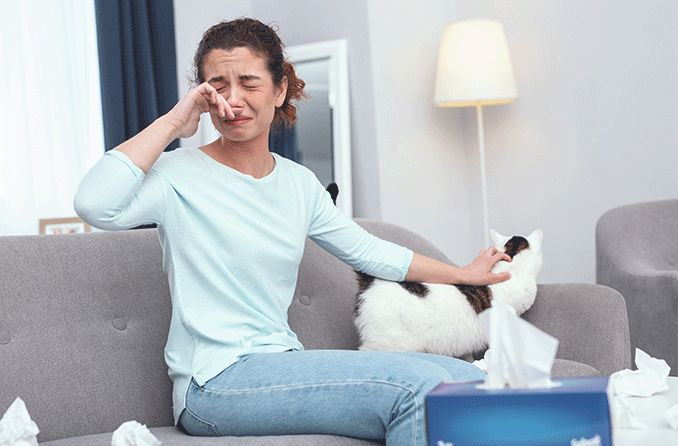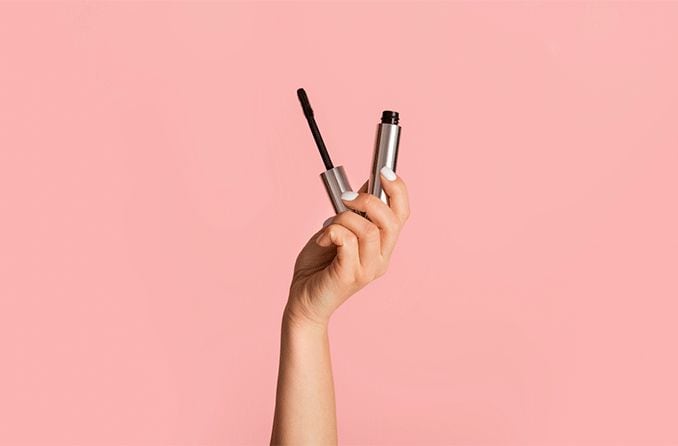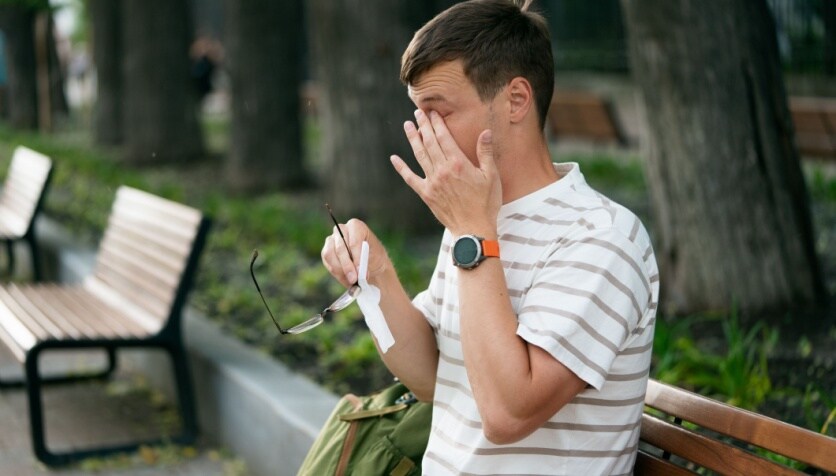Poison ivy — like poison oak and poison sumac — is a plant that produces an oily, sticky resin that gets on your skin if you touch the plant or brush against it. Once the oil is on your hands, it can easily spread to any other part of the body you touch, including your eyes.
Most people — about 85% of the population — are allergic to the resin produced by poison ivy (called urushiol). After contact with the plant, they get an itchy, red, blistery rash.
It’s also possible to get poison ivy through indirect contact. For example, if your dog or cat brushes against the plant, they won’t get a rash. But they can carry the oil on their fur, and you can then get it on your skin when playing with your pet.
Every year, between 10 million and 50 million Americans see their doctors for a poison ivy rash.
What are the symptoms of poison ivy in the eye?
A poison ivy rash in or around the eyes can be painful. Symptoms may include:
- A bumpy, itchy red rash around the eyes
- A rash that turns into oozing blisters
- Small bumps on the insides of the eyelids
- Very watery, red itchy eyes
- Swelling of the soft tissue around the eyes
- Swollen eyelids
- Dry eyelid skin
- The eyes may even swell shut in severe cases
If your eyes swell shut, see your eye doctor right away.
What should I do if I get poison ivy in my eyes?
As soon as you realize you have a poison ivy rash, make sure to shower. You will want to wash off any oil that might still be on your skin. Cleanse with soap and water three times to completely remove the poison ivy oil.
Wipes made with alcohol can also remove the oil. Launder your clothes, and clean anything you may have touched with your hands. Your hands could spread the plant’s oil to your cell phone, or other personal items.
How long does poison ivy in the eyes last?
A poison ivy rash can show up as soon as a few hours after your skin is exposed to the oil. It can also take as long as a few days to develop.
The rash will appear wherever the oil made contact with the skin. If you get blisters, try not to scratch them, no matter how much they itch.
The red rash and blisters will usually clear up in several weeks, regardless of where they’re located on your body.
How do I treat poison ivy in the eye?
If you develop a rash around your eyes after coming into contact with poison ivy, you can:
- Use cool wet compresses to soothe the area around your inflamed, itchy eyes. Do this for 15 to 30 minutes a few times a day.
- Take oral antihistamines as directed, such as loratadine (Claritin) and diphenhydramine (Benadryl). This can be helpful if your itchy rash is keeping you awake at night. (Keep in mind that Benadryl is known to cause drowsiness.)
- When sleeping, elevate your head above your heart to help reduce swelling. You can do this by resting your head on multiple pillows.
- Leave your rash alone. It will probably resolve on its own if you don't do anything, but scratching the itch can make it worse.
While it’s OK to apply over-the-counter cortisone or calamine lotion to other areas of your body, consult your eye doctor before using similarly medicated creams near your eyes. Your doctor can provide guidance and treatment — such as topical steroids or topical antihistamines specifically — that are safe to use in your eye area.
When should I see a doctor?
You should see a doctor if:
- You have a fever of over 100 degrees Fahrenheit
- The itchy rash on your eyes is oozing pus
- The itchy rash is keeping you awake at night
- The rash does not go away on its own in a few weeks
- Your eyes are swollen (especially if they are swollen shut)
- You scratched your rash and it became infected
Swelling of the eye tissue means you’re having a serious reaction that needs to be assessed by a doctor. From there, your doctor may prescribe a steroid cream that is stronger than the one you can buy in the drugstore. They may also prescribe oral steroids if necessary, or an antibacterial cream if your rash is infected. Anti-inflammatory eye drops from your doctor can help as well.
All these treatments will help clear up the inflammation and itchy rash.
Most of the time you will not have to see a doctor, because a poison ivy rash should clear up on its own in one to three weeks. The blisters will dry up and the rash will fade away.
How can I avoid getting poison ivy in my eyes?
There are a number of ways you can avoid poison ivy in your eyes, including:
- Know the appearance of poison ivy, poison oak and poison sumac. All these plants have three leaves. One of the most popular sayings to help you remember is: Leaves of three, let them be.
- If you find poison ivy on your lawn or in your garden, wear long sleeves, pants and gloves when near the plant and clean your gardening tools and gloves before putting them away.
- After walking, gardening or hiking in an area with poison ivy, wash your clothes and shoes and take a shower. Don’t rub your eyes until you know your hands are clean.
- If you’re worried that your pets have come into contact with poison ivy, give them a bath so the oil doesn’t spread to you.
Remember that the rash itself is not contagious. But the oil can spread easily to other people if they touch the oil on you, your clothing or any objects you have touched.
SEE RELATED: Why it’s bad to rub your eyes



